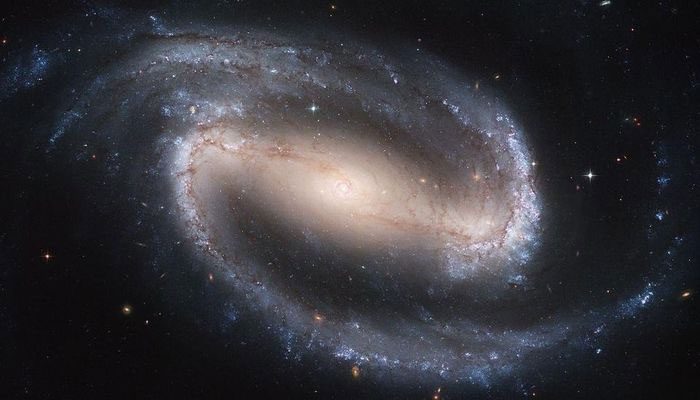The Stars Orbiting the Giant Black Hole in the Milky Way: A Complex Enigma in Astronomy.
According to New Scientist, stars located near the center of the Milky Way exhibit a peculiar “forbidden zone” that has puzzled scientists. Within this area, objects at various distances from the giant black hole at the galaxy’s core, scientifically named Sagittarius A*, show a random distribution in their orbits.

An image of a spiral galaxy captured by the Hubble Space Telescope. (Photo: NASA).
However, some groups of stars mysteriously vanish within this distribution.
The existence of around 200 stars residing close to Sagittarius A* has surprised scientists, given the harsh conditions of this region.
Andreas Burkert from the Observatory at the University of Munich (Germany) and his colleagues examined the orbits of 50 of these stars. They found a strong correlation between the distance of each star from the galactic center and its orbital shape.
Typically, the closer a star is to the galactic center, the more elongated or eccentric its orbit becomes. However, in the vicinity of Sagittarius A*, researchers did not find any stars with circular orbits, a phenomenon referred to as the forbidden zone.
“The forbidden zone has very sharp boundaries. It is as if something is preventing stars from entering this area, or stars that do enter it are destroyed,” said Andreas Burkert.
Meanwhile, Florian Peissker at the University of Cologne (Germany) believes that understanding this phenomenon is crucial for human perception of black holes and their mechanisms.
“It seems that the presence of a supermassive black hole has created a mechanism that forces objects to move along a non-random trajectory,” Florian Peissker added.
According to New Scientist, there are two main hypotheses regarding the orbital shapes of stars and how they approach Sagittarius A*. The first suggests that a smaller black hole may exist in the same area and has altered the orbits of the stars. The second hypothesis posits that these objects were once part of pairs ejected into deep space, while the other black hole remains in a stable orbit at the center of the galaxy.
However, neither of these ideas adequately explains the forbidden zone and further research is necessary.
“We still do not truly know what it is. I think that is the most exciting part,” Burkert stated.




















































